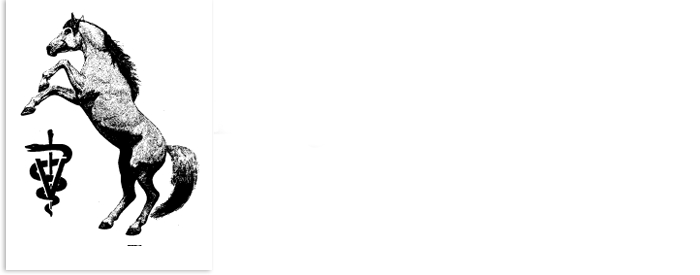De-Worming Your Horse
Why De-Worming is Important!
The leading cause of premature death in horses is colic. The leading cause of colic is parasites. All horses are regularly infected with parasites. Colic is a broad term for abdominal pain that can range from a little gas to full blown twisted intestine. It has been shown over and over in numerous studies at various places that the incidence of colic is decreased dramatically when a strong, effective parasite control program is instituted. This means a good parasite control program can help prevent your horse from suffering from serious illness or even death.
All horses should be de-wormed at least every other month. The following program is the one I recommend to my clients over the course of a year. It has served them very well. I will rarely see a horse on this program for colic.
Ivermectin: Given as De-worming injection, Zimectirn, Eqvalan or Rotectin I
Oxibendazole: Anthelcide, Equipar
Pyrantel Pamoate: Strongid or Rotectin II
Ivermectin: Given as De-worming injection, Zimectirn, Eqvalan or Rotectin I, or other brands. Look for Ivermectin as the generic name for the product
Oxibendazole: Anthelcide, Equipar
2 TUBES of Pyrantel Pamoate or Ivermectin/praziquantel: To treat for tape worms. [Pyrantel Pamoate - Strongid, Rotectin II; Ivermectin/praziquantel - Equimax and others]
Note: Pyrantel Pamoate is only effective against tapeworms at double the normal dose.
Note: Strongid C and other Pyrantel Tartate Products are every day de-wormers mixed into alfalfa pellets. They can serve as a very effective was to eliminate worms in horses and may substitute for all of the above. The only exception is that Ivermectin should be given once or twice a year to eliminate bots. In climates with cold winters this should be done after the first frost. For more information on Strongid C, view this article.
The number one parasite that causes colic is the bloodworm Strongylus vulgaris. Below is an outline of the life cycle of this dangerous parasite. It is the fourth stage larvae that literally migrate through the walls of the arteries that supply the intestine that are the most dangerous to your horse.
The life cycle starts with the mature adults. These are 1 to 2 inches long and live in the intestines of your horses. They attach to the inner wall and feed by sucking blood from your horse. If your horse has a large infection with these adults they can cause anemia by draining too much blood as they eat. The adults pass eggs into the manure. The eggs then hatch into first stage larvae. The stage one larvae turn into stage two and then stage three larvae outside your horse. It is the stage three larva that is the infective stage. These little buggers climb onto blades of grass and wait for your horse to come and eat them.
Once your horse has eaten the stage three larvae, the larvae burrow into the wall of the small intestines. There they change into stage four larvae. These are the most devastating. These larvae migrate through the wall of the intestine into the wall of the mesenteric arteries. Mesenteric arteries supply blood to your horse's intestine. Migrating larvae weaken the walls of the mesenteric arteries. This can cause bulges called aneurysms or it can cause blood clots to form. Clots block circulation. If enough blood clots are formed, if enough circulation is compromised, a section of intestine will die. This is when you see your horse colic. It is extremely painful.
The fourth stage larvae then migrate back to the wall of the intestine where they turn into stage five larvae. They then enter the inside of the intestine. Here they mature and start laying eggs again completing the life cycle.
While Strongylus vulgaris, the bloodworm, is the most important parasite to control. There are several others that are of concern. There are tapeworms, bots, pinworms, small Strongylusspecies and others.
There are many effective ways to control parasites. However, they all involve removal of parasites on at least an every two-month basis. Below is the method I recommend, to my clients, for controlling parasites. The most confusing aspect is that one time a year you should use pyrantel pamoate (sold as Strongid or Rotectin II) at two times the normal dose. This de-wormer can eliminate tapeworms and it will only do so at two times the normal dose. Another method to treat tapeworms is to use a combination de-wormer containing praziquantel such as Equimax - in which praziquantel is combined with ivermectin.
There are many paths to success. The recommendations in the above box are my recommendations for parasite control for horses treated in my practice.

